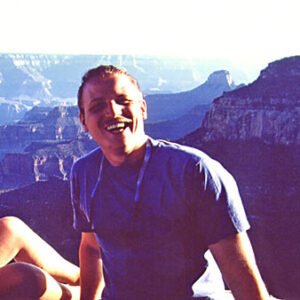The size of the space, its depth, is the extent between the objects. Depending on how the space appears to us, we use the attributes “extended”, “expansive”, “infinite”, “narrow” or “compressed”. Photography cannot directly reproduce the depth of space as a 3rd dimension.
Due to cultural conditioning, we are used to specifying the size of an object in centimeters or meters. Surprisingly, our perception of object size changes only slightly when we approach or move away within certain limits. Most of the time, photography cannot reproduce the object size 1:1 due to the limitations of recording and print formats.Therefore, spatial depth and object size share a commonality: they both evoke a sense of dimension that, for various reasons, we cannot directly capture in photography, but must instead suggest in order to convey.
Space naturally only appears as a two-dimensional image on our eyes‘ retinas. As we nevertheless perceive depth and size, our visual system has to add them, i.e., construct them. To do this, our perceptual apparatus does not rely on a single criterion, such as central perspective, but on various points of reference. We can divide them into binocular depth criteria, such as stereoscopy, convergence and accommodation, which require both eyes to be used, and monocular depth criteria, which can also be perceived with just one eye. The latter include occlusion, relative size, relative height and atmospheric perspective. In addition, motion-induced depth criteria, such as motion parallax and the progressive covering and uncovering of surfaces, have also been demonstrated. They use our movement relative to the objects in space and the great physiologist Hermann von Helmholtz described a situation as early as 1866 in which the movement of the observer promotes depth perception: “If, for example, you are standing still in a dense forest, it is only possible in an indistinct and coarser way to separate the tangle of leaves and branches in front of you and to distinguish which belong to this and that tree. … As one moves along, however, everything becomes separated, and one immediately gets a physical spatial view of the forest, just as if one were looking at a good stereoscopic image of it.” (von Helmholtz, Hermann 1867). With regard to their effectiveness in the various distance ranges, we can categorize the monocular depth criteria as follows:
Criterion 0 – 2 m 2 – 30 m >30 m
Occosion X X X
Relative Size X X X
Convergence X
Motion Parallax X
Relative Height X X
Atmospheric Perspective X
Space and objects expand in three dimensions. However, their image on our retina is only two-dimensional. As we nevertheless perceive depth and size, our visual system has to add them, i.e. construct them.
Next Stereoscopy
Main Image creation, Depth and Size
Previous What visual perception does and what photography should do
If you found this post useful and want to support the continuation of my writing without intrusive advertising, please consider supporting. Your assistance goes towards helping make the content on this website even better. If you’d like to make a one-time ‘tip’ and buy me a coffee, I have a Ko-Fi page. Your support means a lot. Thank you!


 Since I started my first website in the year 2000, I’ve written and published ten books in the German language about photographing the amazing natural wonders of the American West, the details of our visual perception and its photography-related counterparts, and tried to shed some light on the immaterial concepts of quantum and chaos. Now all this material becomes freely accessible on this dedicated English website. I hope many of you find answers and inspiration there. My books are on
Since I started my first website in the year 2000, I’ve written and published ten books in the German language about photographing the amazing natural wonders of the American West, the details of our visual perception and its photography-related counterparts, and tried to shed some light on the immaterial concepts of quantum and chaos. Now all this material becomes freely accessible on this dedicated English website. I hope many of you find answers and inspiration there. My books are on